Key takeaways:
- Culinary education fosters not just cooking skills but also connections with peers, enhancing both learning and friendships.
- Shared experiences, such as cooking together or hosting potlucks, create camaraderie and deepen bonds among classmates.
- Building a support system through collaboration and open communication is crucial in managing the pressures of culinary school.
- Joining culinary clubs encourages the exchange of diverse cultural backgrounds and personal stories, enriching the educational experience.
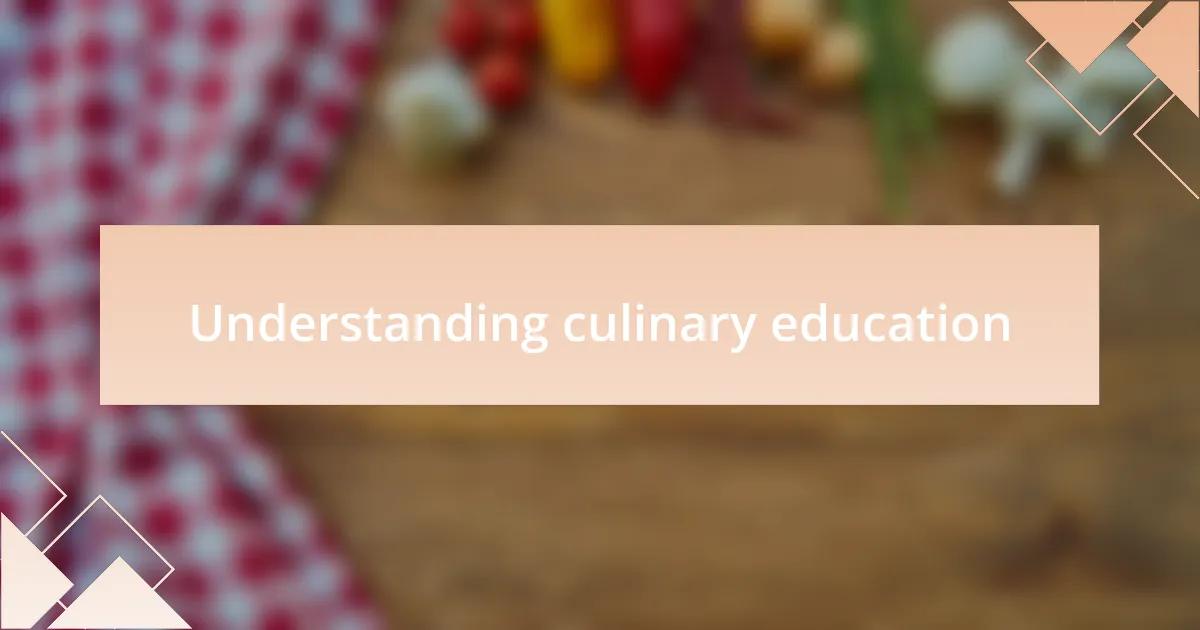
Understanding culinary education
Culinary education is a vibrant journey that goes beyond mere cooking skills; it encompasses the art and science of food. I remember the thrill of my first class when the instructor shared the chemistry behind perfecting a soufflé. It was a moment that illuminated how deeply connected food is to technique and passion.
In my experience, culinary school is about forging a connection with not only ingredients but also with fellow students who share your enthusiasm. Have you ever felt the camaraderie that develops when you all struggle to julienne carrots perfectly? Those moments of collective learning and laughter create bonds that can last a lifetime, making the experience memorable.
Moreover, culinary education is about exploring cultural diversity through cuisine. One of my most vivid experiences was cooking with peers from different backgrounds, each sharing unique family recipes. This exchange sparked a newfound respect for various culinary traditions and deepened my appreciation for food’s role in celebrating our shared humanity.
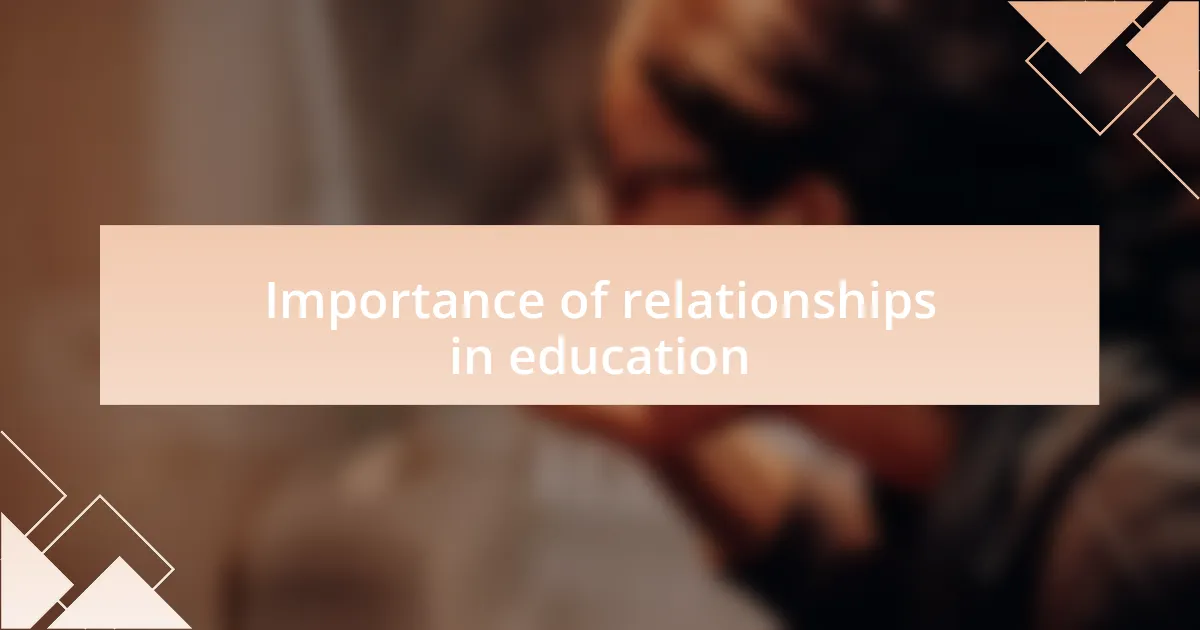
Importance of relationships in education
Building relationships in an educational setting is crucial, particularly in culinary education. I vividly recall those late nights in the kitchen with classmates, where we would bond over the challenges of mastering complex techniques such as bread-making. Isn’t it fascinating how shared struggles can sometimes foster the strongest connections?
These relationships enrich the learning experience, transforming it from a solitary endeavor into a collaborative adventure. When I think about the times we teamed up for group projects, from planning menus to working through our differences, it was those very interactions that sharpened our skills. Have you ever noticed how teamwork in the kitchen can turn a daunting task into a fun, engaging activity?
Moreover, the friendships we cultivate often extend beyond the classroom, leading to professional networking opportunities in the culinary world. I can’t count how many times my classmates have helped me find internships or jobs, simply because we had built a solid rapport. It makes me wonder: how can we leverage these interpersonal connections to not only enhance our education but also shape our future careers?
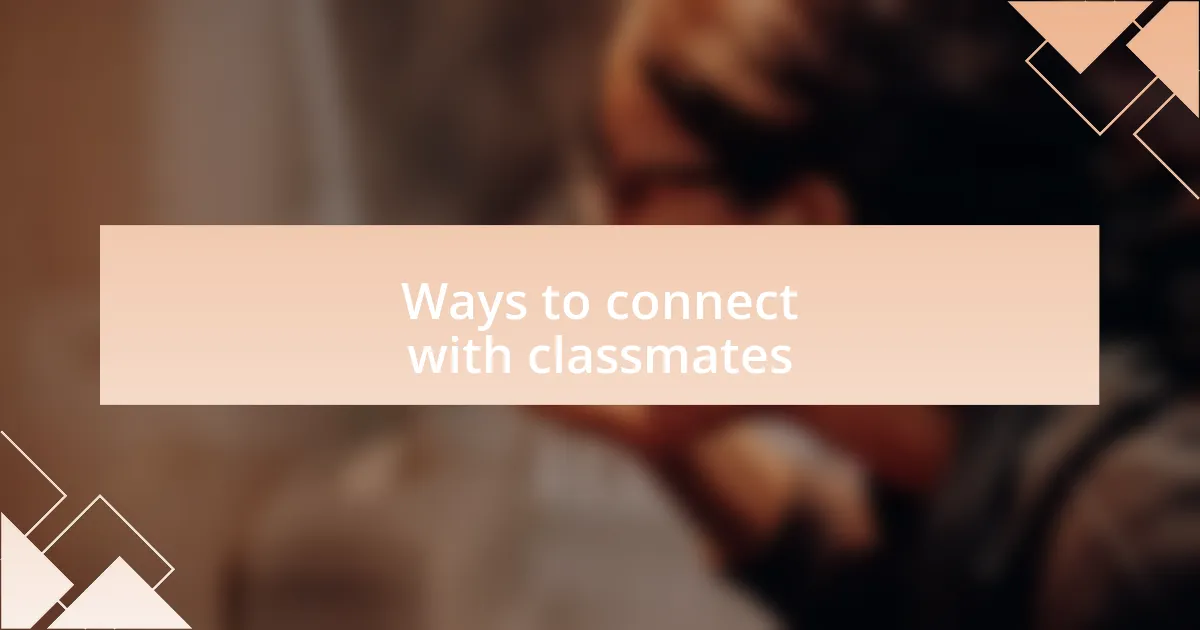
Ways to connect with classmates
To truly connect with classmates, I suggest starting with informal cooking sessions outside of class. I remember inviting a few classmates to my apartment for a weekend pasta-making party. We laughed, learned from each other’s techniques, and created something delicious together. Isn’t it interesting how sharing a meal can feel like sharing a part of yourself?
Another effective way is through collaborative projects or study groups focused on culinary topics. I once joined forces with my classmates to experiment with a series of themed dishes for a class presentation. Working together not only helped us combine our strengths but also deepened our friendships as we faced the pressures of deadlines. Have you noticed how shared goals can create a sense of camaraderie that lasts well beyond the classroom?
Finally, engaging with classmates on social media or culinary platforms can keep the connections alive. I’ve found that sharing photos of our culinary creations sparks conversations and fosters motivation. Isn’t it uplifting to receive encouragement from friends who understand the hard work you put into your craft? By actively participating in each other’s culinary journeys, we weave a supportive network that thrives both in and out of the classroom.
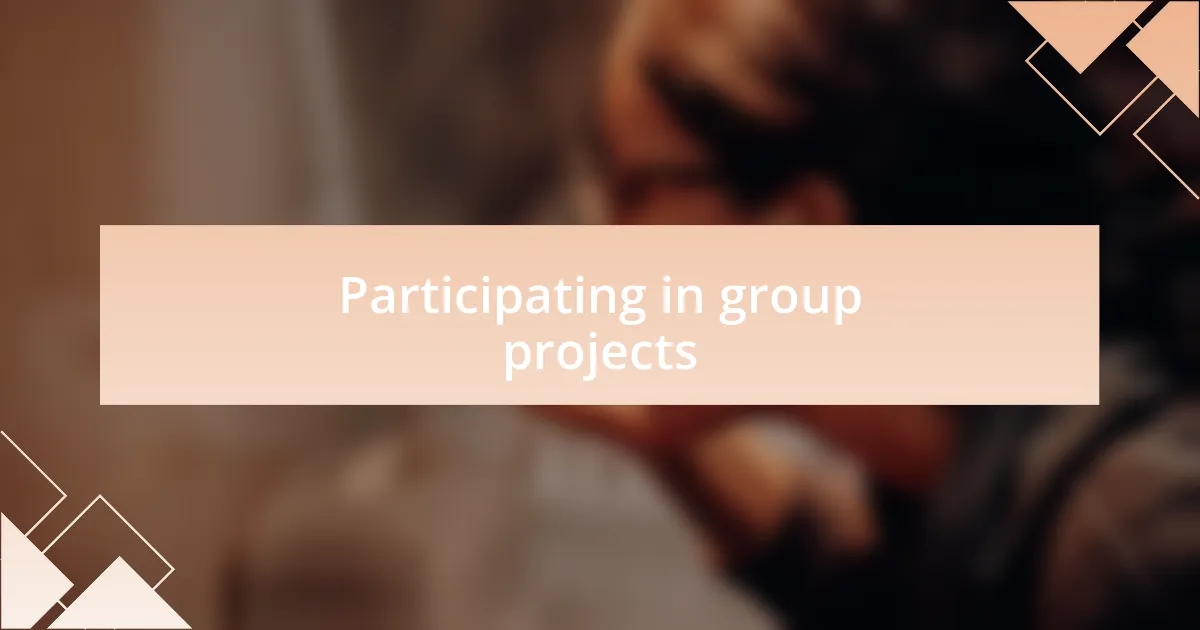
Participating in group projects
Participating in group projects can be an eye-opening experience. I distinctly remember the time my team and I decided to create a modern twist on traditional comfort food for a class project. The energy in the kitchen was infectious; we bounced ideas off one another, shared laughter, and tackled challenges together. It was exhilarating to watch our different styles and techniques converge into a cohesive dish.
Working closely with my classmates on these projects taught me the value of collaboration. During one particularly intense week, we were all feeling the pressure, but instead of letting it divide us, we started cooking together every night. Sharing not just the tasks, but also our thoughts and worries built a support system that made the long hours feel lighter. How often do you find that the act of creating something together can transform relationships?
Moreover, it was interesting to witness how our diverse backgrounds influenced our culinary perspectives. A simple brainstorming session often turned into deep discussions about culture, tradition, and food memories. I’ve realized that through group projects, not only did we learn techniques, but we also forged bonds over our unique experiences. Isn’t it remarkable how food can be a gateway to understanding one another on a deeper level?

Joining culinary clubs or organizations
Joining culinary clubs or organizations can be a game-changer when it comes to building lasting friendships. I remember my first day at a culinary club meeting; I was a bit nervous but excited. As we brainstormed ideas for our next community event, I quickly formed connections with fellow members who shared my passion for food and cooking. The shared enthusiasm created an immediate camaraderie, making it much easier to open up and connect on a personal level.
What struck me most was how culinary clubs often attract individuals from various backgrounds, each bringing unique perspectives to the table. One member shared a family recipe that had been passed down through generations, and I was fascinated by the stories behind it. Hearing these personal narratives sparked discussions that went beyond cooking techniques, allowing us to bond over our diverse culinary heritages. Have you ever felt that thrill of discovering a friend’s unique story over a meal?
Additionally, participating in club activities like food tastings or workshops allowed for hands-on experiences that fostered deeper connections. I still cherish the memory of a hands-on pasta-making night. We worked side by side, joking and sharing tips, and by the end of the evening, we weren’t just classmates; we were friends who eagerly looked forward to our next gathering. Isn’t it amazing how the act of creating something delicious can weave friendships into the fabric of our culinary journey?

Sharing personal experiences
Sharing personal experiences in the culinary world has a profound impact on the friendships I’ve formed. I remember the first time I shared my culinary mishaps with a group of classmates. The laughter that followed and the comforting words of, “We’ve all been there!” created a bond that turned strangers into friends. It’s incredible how vulnerability can break down barriers and foster deeper connections.
One particular afternoon, I decided to host a small potluck dinner with my classmates, where everyone brought a dish that represented their background. As we shared our food, I was captivated by stories of childhood meals and family traditions that emerged with each bite. It felt like we were not just sharing food, but also a piece of ourselves. Have you ever realized how food can be a bridge between hearts? That evening, with plates piled high and laughter echoing, I truly felt the warmth of friendship blossoming.
On another occasion, during a late-night study session for our baking exam, we found ourselves experimenting with recipes to keep the energy up. It was chaotic but exhilarating, transforming stress into a fun and memorable experience. We leaned on each other, sharing tips and cheering each other on. The shared chaos turned into a foundation for a lasting friendship. Isn’t it amazing how some of the best friendships are forged in the heat of the kitchen?
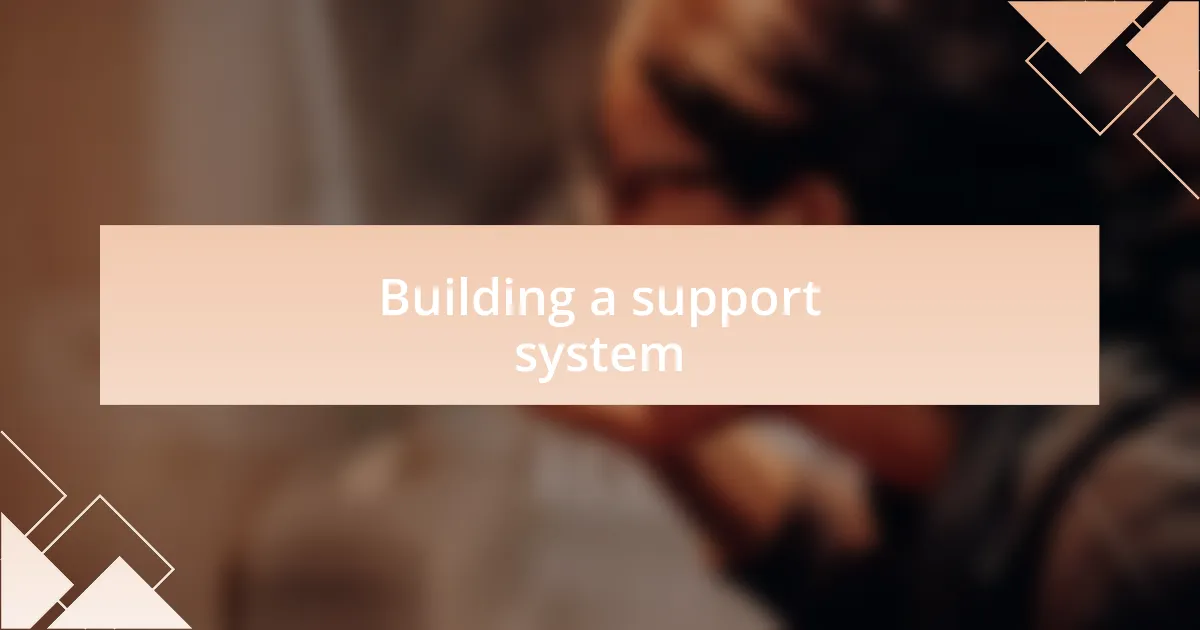
Building a support system
Building a support system in culinary school requires more than just shared interests; it’s about being there for one another when the pressure mounts. I recall a moment when we were all preparing for a major midterm exam. In the days leading up to it, my classmates and I formed a study group, exchanging not just notes but encouragement. Have you ever felt the weight lift off your shoulders when you realize you’re not alone in your struggles? That sense of camaraderie made the entire experience more manageable.
It wasn’t just about studying; it was in the small, everyday gestures, too. I remember a time when a classmate noticed I was overwhelmed while prepping for a competition. Without a second thought, they stepped in to help chop vegetables while I focused on my main dish. That simple act reminded me of how important it is to support each other in high-pressure environments. It’s these moments of kindness that truly solidify friendships, making us feel like we’re part of a team rather than isolated individuals.
I’ve also found that establishing open lines of communication fosters a stronger support network. I made it a point to reach out to classmates for feedback on my dishes, inviting them to share their thoughts honestly. On several occasions, their constructive criticism has helped me grow tremendously. Have you ever considered how a few honest words can pave the way for deeper connections? Knowing that we’re all invested in each other’s success is what really binds us together as friends in this culinary journey.